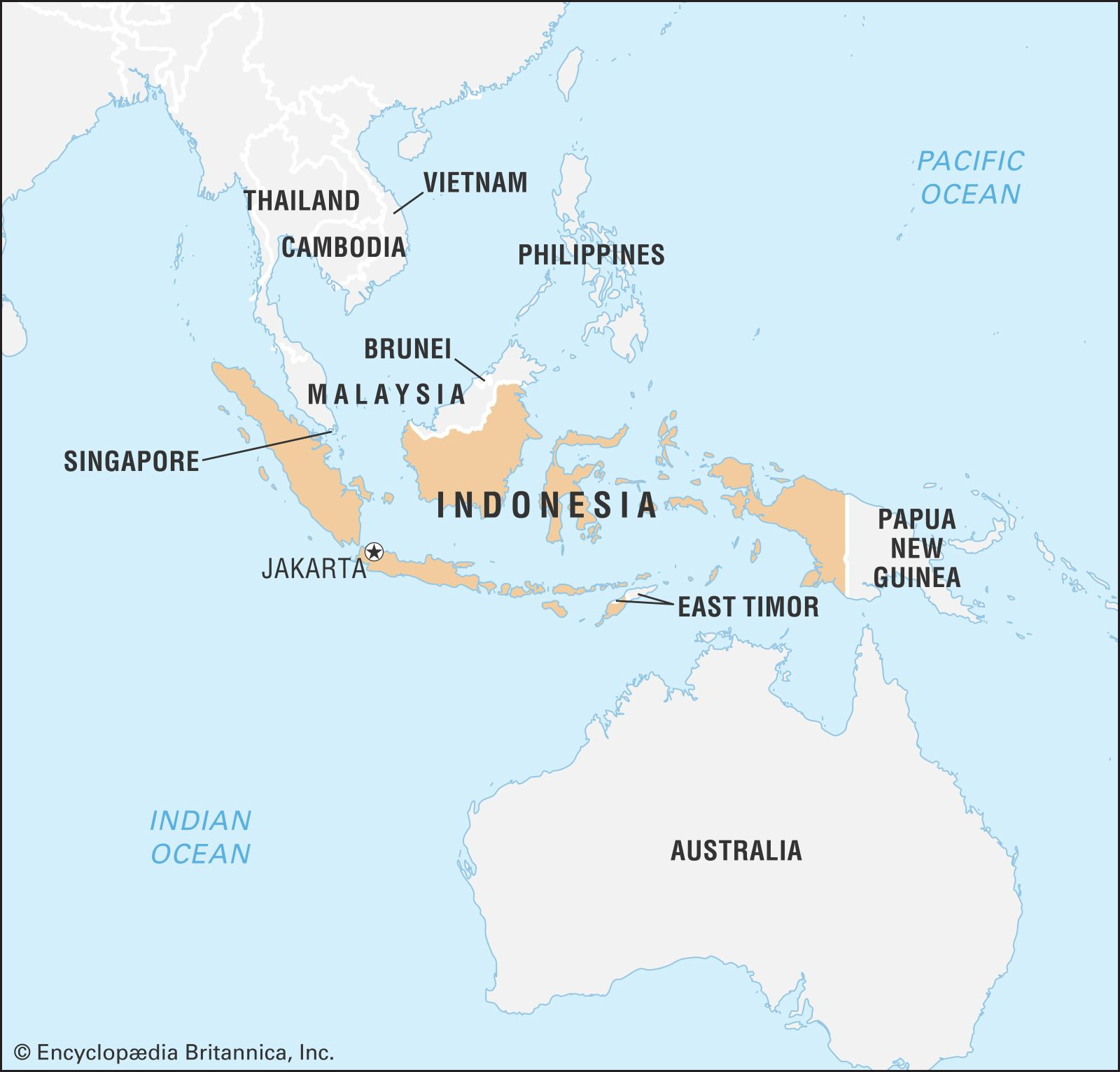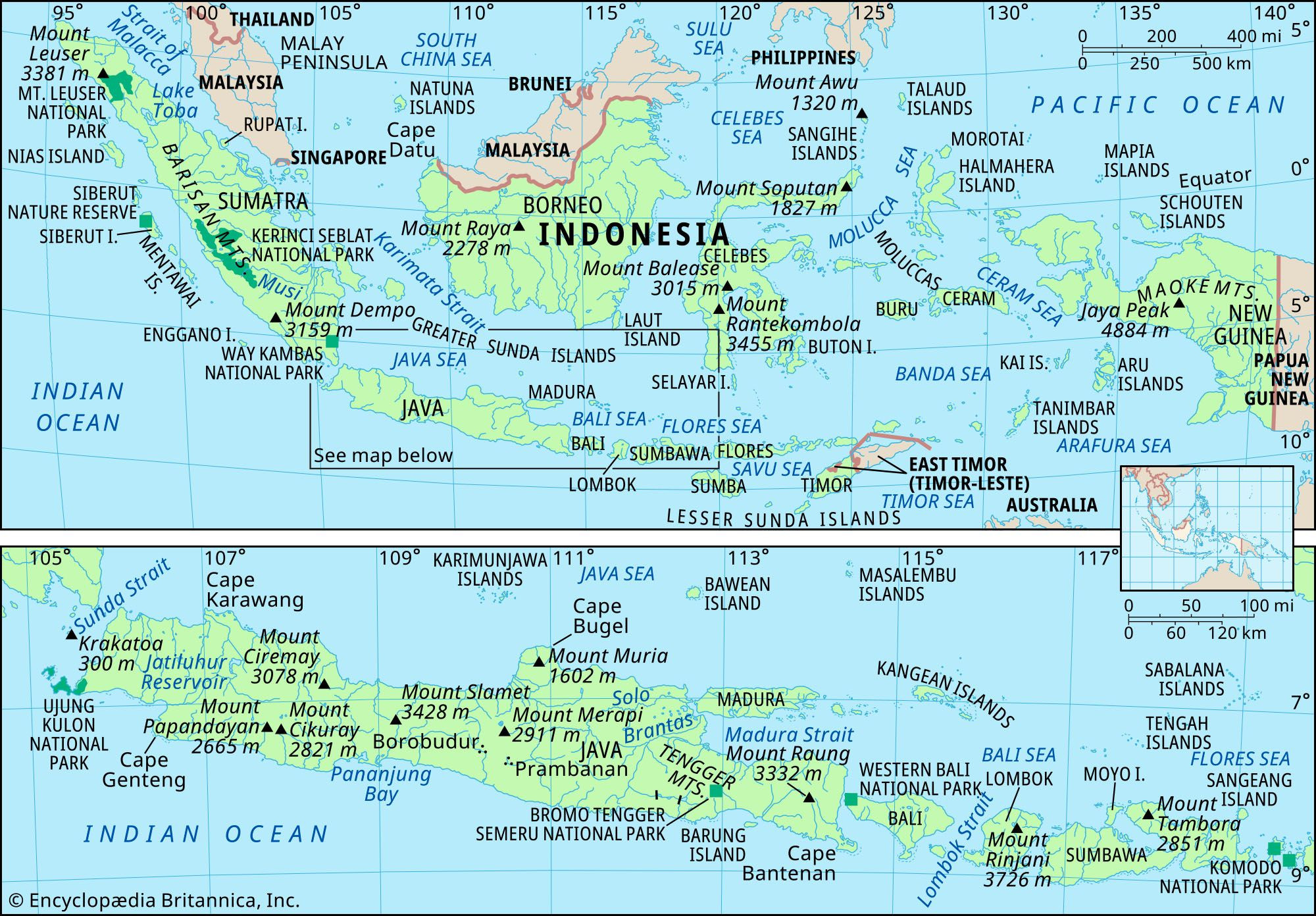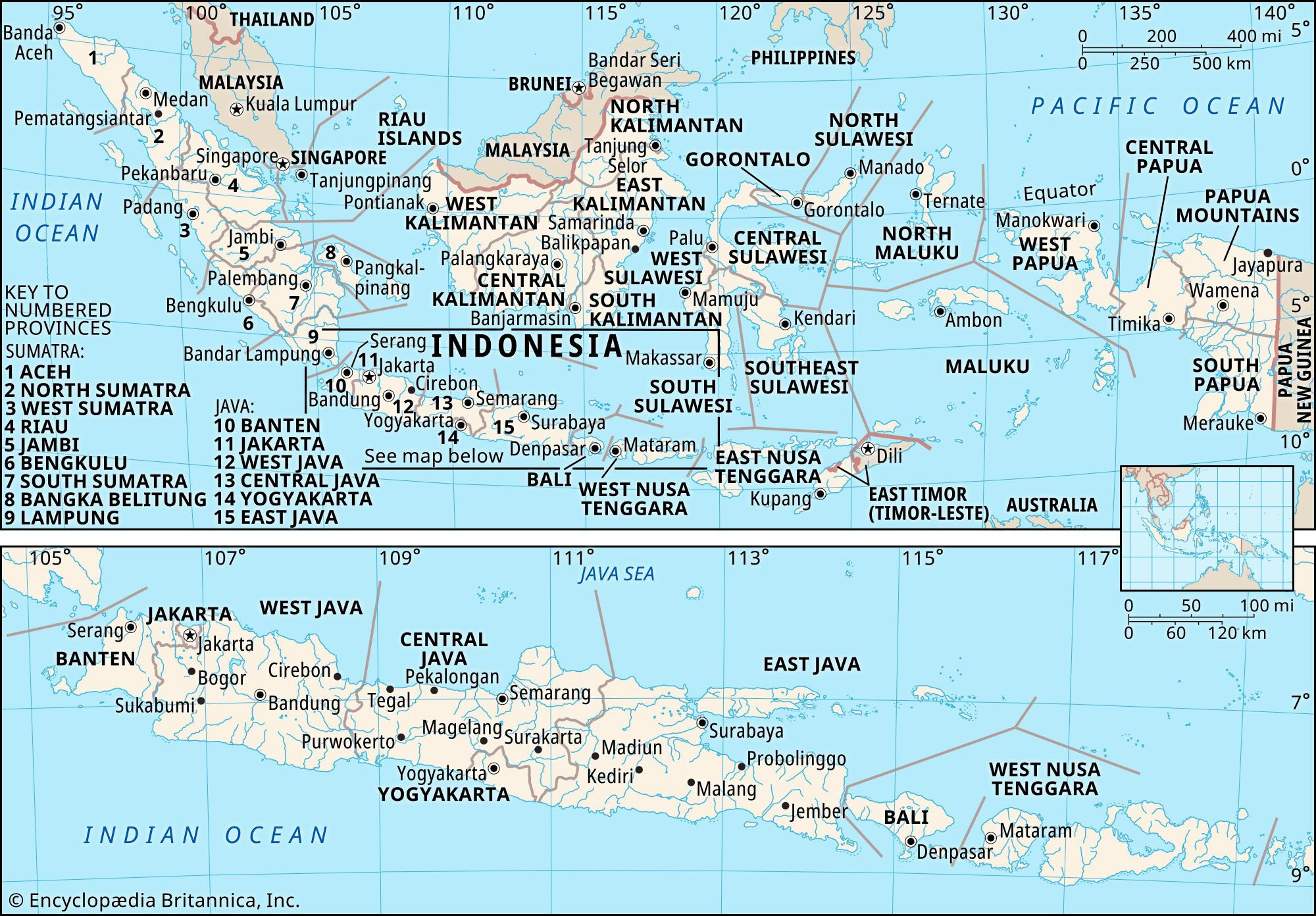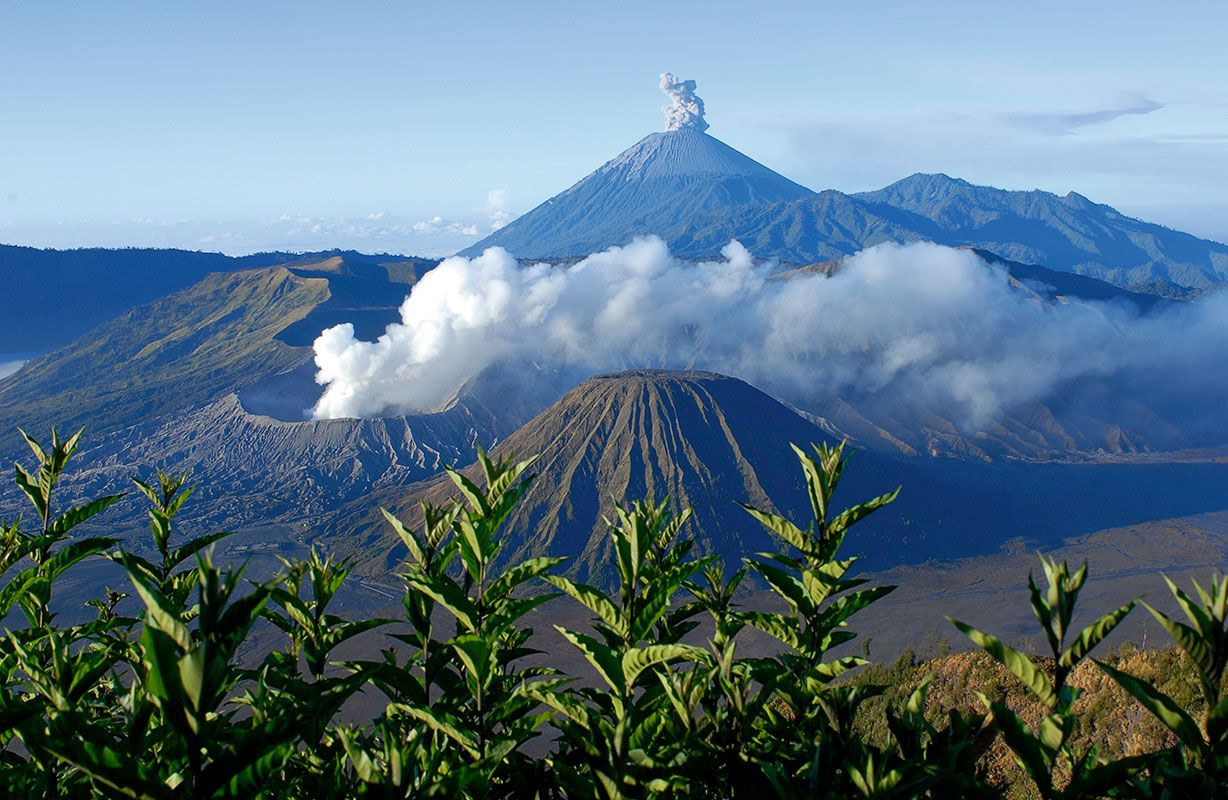Indonesia, officially known as the Republic of Indonesia, is a captivating country located in Southeast Asia. But Where Is Indonesia exactly? This sprawling archipelago nation sits off the coast of mainland Southeast Asia, nestled strategically between the Indian and Pacific Oceans. Spanning the Equator, Indonesia’s vast archipelago stretches across a distance equivalent to one-eighth of the Earth’s circumference, making it the largest country in Southeast Asia and the fourth most populous in the world.
Indonesia in its entirety encompassing numerous islands including Java, Bali, Lombok, and Sumbawa, highlighting its expansive archipelago.
Indonesia’s unique geographical position has shaped its history, culture, and environment, making it a fascinating subject of study and a popular destination for travelers. Its islands are primarily grouped into four main clusters: the Greater Sunda Islands, the Lesser Sunda Islands, the Moluccas, and the western part of New Guinea, known as Papua. The bustling capital city, Jakarta, is strategically situated on the northwestern coast of Java, the most populous island in the archipelago.
Indonesia’s location is not just geographically significant; it’s also a cultural and historical crossroads. Formerly known as the Dutch East Indies, Indonesia declared independence in 1945 after Japanese occupation during World War II. However, the struggle for sovereignty continued until 1949 when the Netherlands formally recognized Indonesian independence. The country’s modern borders were solidified in 1969 when the United Nations acknowledged western New Guinea as part of Indonesia. East Timor, once part of Indonesia, became an independent sovereign state in 2002.
Mount Bromo and Mount Semeru, iconic active volcanoes in East Java, Indonesia, showcasing the country’s volcanic landscape.
Key Geographical Facts About Indonesia:
- Location: Southeast Asia, straddling the Equator between the Indian and Pacific Oceans.
- Archipelago: Composed of approximately 17,500 islands, with over 7,000 uninhabited.
- Major Island Groups: Greater Sunda Islands (Sumatra, Java, Borneo/Kalimantan, Celebes/Sulawesi), Lesser Sunda Islands (Bali, Timor, and eastward chain), Moluccas (Maluku), and Papua (western New Guinea).
- Borders: Shares land borders with Malaysia on Borneo and Papua New Guinea on New Guinea island.
- Size: Extends about 3,200 miles (5,100 km) east to west and 1,100 miles (1,800 km) north to south.
- Capital: Jakarta, located on the northwestern coast of Java.
Indonesia’s archipelago sits at a crucial meeting point of tectonic plates, contributing to its dramatic volcanic landscape and seismic activity. This location also places it at the junction of two distinct faunal realms and has historically made it a nexus for trade and cultural exchange between Oceania and mainland Asia.
 World Data Locator Map Indonesia.
World Data Locator Map Indonesia.
Indonesia’s location pinpointed on a world map, illustrating its position in Southeast Asia and within the Ring of Fire.
Diverse Landscapes and Geology:
The Indonesian islands are characterized by a stunning variety of landscapes. Volcanic mountains, often densely forested, dominate the interiors of the major islands, gradually sloping down to coastal plains. These plains are often covered in rich alluvial swamps that eventually merge into shallow seas and vibrant coral reefs.
Underneath this picturesque surface lies a complex geological structure. Indonesia sits at the convergence of three major sections of the Earth’s crust. The islands of Borneo, Sumatra, Java, Bali, and the Lesser Sunda chain rest on the Sunda Shelf, an extension of the Asian continental mass. To the south and west, deep-sea trenches like the Java Trench mark the true continental boundary. New Guinea and surrounding islands are situated on the Sahul Shelf, an extension of the Australian continental mass. A third major geological feature is an extension of the mountain range that includes Japan and the Philippines, running between Borneo and New Guinea, encompassing volcanoes and deep-sea trenches around Celebes and the Moluccas.
 Indonesia entirety islands Lombok Bali Java Sumbawa.
Indonesia entirety islands Lombok Bali Java Sumbawa.
Indonesia and its island chain including Lombok, Bali, Java, and Sumbawa, showcasing the island arc formation.
The seas covering the Sunda and Sahul shelves are relatively shallow and geologically young, resting on continental masses rather than true ocean floors. The Sunda Shelf near the Java Sea is relatively flat and non-volcanic, with coral reefs. However, the mountain system along the South China and Celebes Seas is highly volcanic, forming one of the world’s most active volcanic zones.
The southern island chain from Sumatra to the Lesser Sundas marks the edge of the Southeast Asian landmass and is characterized by active volcanoes and deep-sea trenches to the south and west. On the inner side, volcanic mountains transition into swamps, lowlands, and the shallow Java Sea. The Java Sea itself formed relatively recently, around 12,000 years ago at the end of the Pleistocene Epoch, and evidence suggests past land bridges that facilitated plant and animal migration from the Asian continent.
Mount Agung volcano towering over lush rice paddies in Bali, Indonesia, exemplifying the fertile volcanic soil and agricultural landscape.
Conclusion:
So, where is Indonesia? It is strategically located in the heart of Southeast Asia, an archipelago bridging continents and oceans. This unique location has endowed Indonesia with exceptional biodiversity, a rich cultural heritage, and a dynamic history. From its volcanic peaks to its coral reefs, Indonesia offers a diverse and compelling landscape that continues to fascinate and attract people from around the globe. Its position as a global crossroads ensures its continued importance in international trade, culture, and environmental conservation. Understanding where Indonesia is is the first step to appreciating its vastness and significance in the world.


 Mount Bromo (foreground) and Mount Semeru (background), two active volcanoes in eastern Java, Indonesia.
Mount Bromo (foreground) and Mount Semeru (background), two active volcanoes in eastern Java, Indonesia.